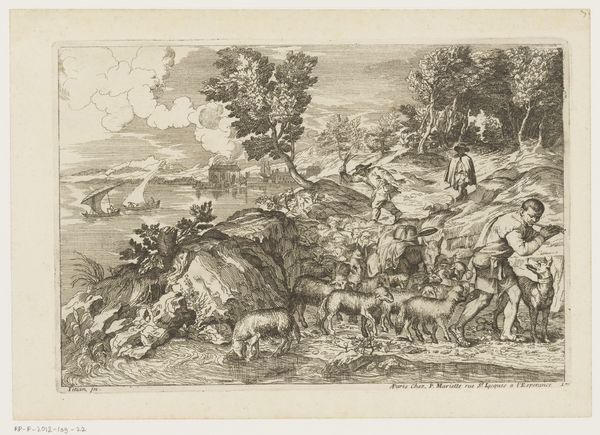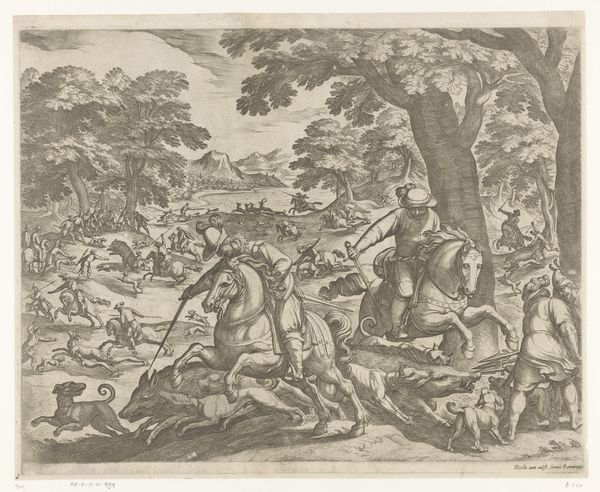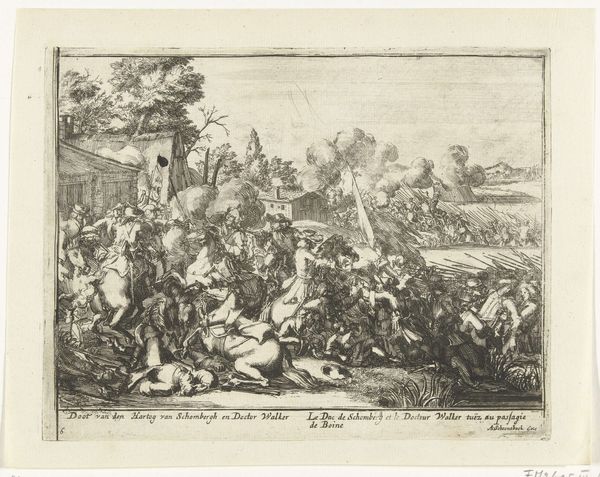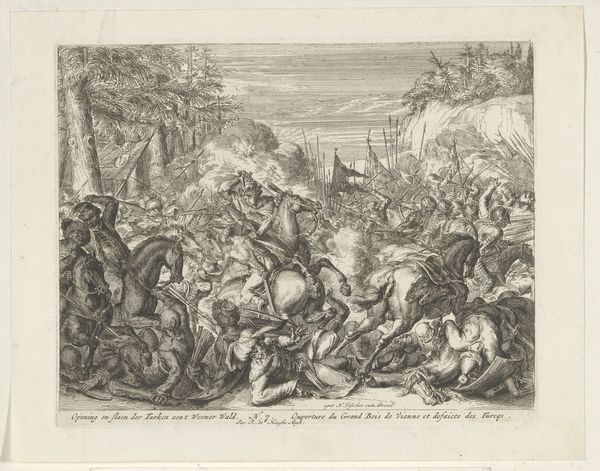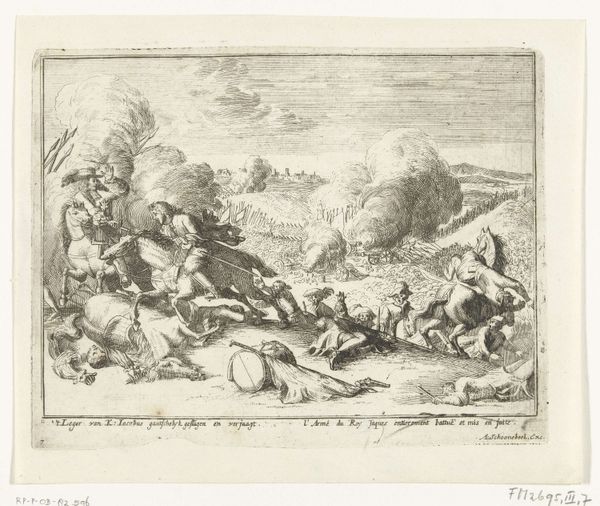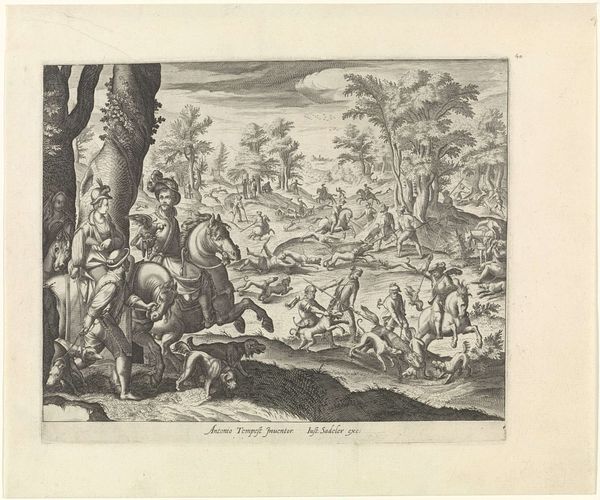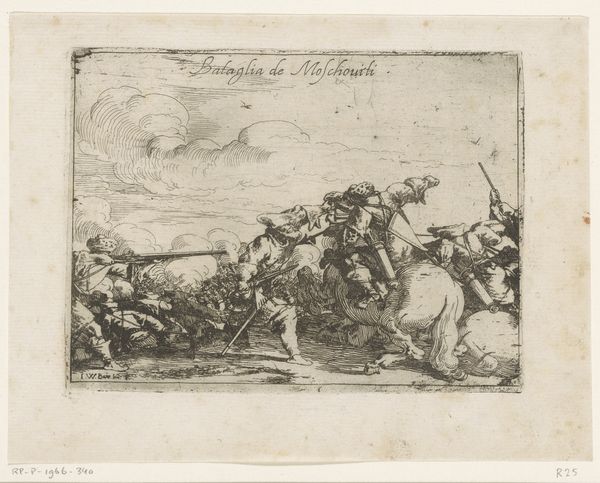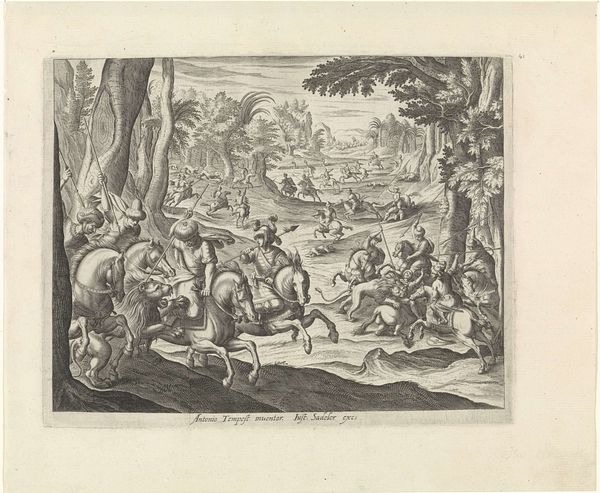
print, etching
#
ink drawing
#
baroque
#
pen drawing
# print
#
pen sketch
#
etching
#
landscape
#
figuration
#
history-painting
Dimensions: height 207 mm, width 289 mm
Copyright: Rijks Museum: Open Domain
Hugo Allard created this print, *Ruitergevecht*, sometime in the 17th century, using etching, a printmaking technique that relies on the corrosive power of acid. The artist would have coated a metal plate with a waxy, acid-resistant substance, then scratched an image into this coating, exposing the metal beneath. Immersing the plate in acid would bite away at these exposed lines, creating grooves that could then be inked and printed. Look closely and you'll see how Allard has used a dense, energetic network of lines to create dramatic visual effects. The etching process allows for a high level of detail, creating a sense of movement. The figures and landscape emerge from the dense, complex web of marks, conjuring a lively scene of soldiers engaged in battle. Prints such as these played an important role in disseminating imagery in early modern Europe. They made images widely accessible, acting as a kind of news media. The very labor intensive process of etching allowed Allard to distribute his vision of war to a broad audience. Considering its wide distribution and its making, this print complicates the divide between craft and fine art.
Comments
No comments
Be the first to comment and join the conversation on the ultimate creative platform.
